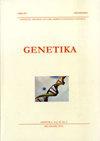Susceptibility levels of some chestnut cultivars and genotypes to the chestnut gall wasp in Turkey
4区 农林科学
Q3 Agricultural and Biological Sciences
引用次数: 0
Abstract
The Asian chestnut gall wasp (ACGW) is one of the most important pests threatening most Castanea species. The best management strategy against this pest can be establishing new orchards with resistant cultivars along with biocontrol (parasitoid Torymus sinensis Kamijo (Hymenoptera: Torymidae)). In Turkey, ACGW was first detected in 2014 at Gac?k village of Yalova province. Bursa, ?stanbul, Sakarya, Kocaeli, Bal?kesir, Bilecik, D?zce, Giresun, Bart?n, Zonguldak, Sinop and ?zmir provinces are also infected with ACGW. This study was carried out to determine the levels of susceptibility of chestnut cultivars/genotypes to ACGW. The study was carried out in Yalova province between 2016 and 2018. In total, 15 cultivars/genotypes were involved in the study, including European (C. sativa) chestnuts (Albayrak, Alt?nay, ?Erfelek?, ?Osmano?lu?, Sal?pazar?, ?Serdar?, ??nal?), interspecific hybrids (?Marigoule? and BDB-L) and complex hybrids (?Aky?z?, ?Macit 55?, ?Ali Nihat?, A9, A55, A56) were tested in the study. In April 2016, five- to seven-year-old seedlings were ?bark? grafted, and susceptibility to the ACGW was evaluated by recording the ratio of infected buds (%), visual assessment of the damage (severity), and calculations of an infestation index. Among the cultivars and genotypes tested in the study, the ?Aky?z? cultivar was determined to exhibit the highest resistance against the ACGW. To fully understand the resistance mechanism of the ?Aky?z? cultivar, molecular and biochemical studies should be done and compared with other results.土耳其一些栗子品种和基因型对栗子瘿蜂的易感水平
板栗瘿蜂(ACGW)是威胁板栗属植物的主要害虫之一。防治这种害虫的最佳策略是建立新的果园,培育具有抗性的品种,并采取生物防治措施(膜翅目:圆叶蝉科)。2014年,土耳其Gac?亚洛瓦省的k村。布尔萨,斯坦堡,萨卡里亚,科卡埃利,巴尔?比莱克克先生,D?你好,吉雷森,巴特?n、宗乌尔达克、锡诺普和兹米尔省也感染了急性粒细胞性白血病。本研究旨在确定板栗品种/基因型对ACGW的易感性水平。该研究于2016年至2018年在亚洛瓦省进行。研究共涉及15个品种/基因型,包括欧洲(C. sativa)栗子(Albayrak, Alt?不,Erfelek ?陆,Osmano ? ?, Sal pazar ?Serdar ?种间杂交(Marigoule?和BDB-L)和复杂的混合动力车(?Aky?z?Macit 55?阿里·尼哈特?(A9, A55, A56)在研究中进行了检测。2016年4月,5到7岁的幼苗被称为“树皮”。通过记录侵染芽的比例(%)、目视损害评估(严重程度)和侵染指数的计算来评估对ACGW的敏感性。在本研究测试的品种和基因型中,? akizz ?该品种对ACGW的抗性最高。为了充分了解?Aky?z?应进行品种、分子和生化研究,并与其他研究结果进行比较。
本文章由计算机程序翻译,如有差异,请以英文原文为准。
求助全文
约1分钟内获得全文
求助全文
来源期刊

Genetika-Belgrade
AGRONOMY-GENETICS & HEREDITY
CiteScore
1.80
自引率
0.00%
发文量
1
审稿时长
6-12 weeks
期刊介绍:
The GENETIKA is dedicated to genetic studies of all organisms including genetics of microorganisms, plant genetics, animal genetics, human genetics, molecular genetics, genomics, functional genomics, plant and animal breeding, population and evolutionary genetics, mutagenesis and genotoxicology and biotechnology.
 求助内容:
求助内容: 应助结果提醒方式:
应助结果提醒方式:


